I truly believe that being a mother has helped me to be a better doctor. Until you’ve experienced the anguish of having a feverish, poorly child (and let’s face it, there really isn’t anything worse) it’s difficult to appreciate that unless the situation is crystal clear (it never is), all rational thought goes out the window the moment your baby starts burning up, and you find yourself going round in circles, questioning yourself on what the right thing to do is. Even if you know what’s OK to deal with yourself and what isn’t, once the emotional factors come into play; when you see this little extension of you who is usually happy and playing, now miserable and sleepy, it’s easy to forget. I say this as someone who has felt all of these things myself.
Fevers in children are common. Really common. It’s something we will ALL have experience with. And so we know that most of the time, they’ll get better, with no treatment, and no consequences. But we also know that occasionally that high temperature could be a sign that your child has a serious illness. The question is – how do you know? When should you be worried?
To start, I think it’s really useful to know what a fever is, so please bear with me whilst I get my geek hat on for a moment. When your child has an infection, both the presence of micro-organisms (bacteria or viruses) and chemicals produced by their own immune system trigger a reaction in the body that leads to an increase in their core temperature. So, the fever itself is actually a symptom of an infection, and it’s also a sign that your child’s immune system is working well. Added to this, there is evidence that fever is actually beneficial in helping to fight the infection, so although having a high temperature may make your child look and feel unwell, it really isn’t anything to fear. Around 2% of children, at some point, will have a febrile convulsion – this is an event that looks like an epileptic fit, and although frightening to see, usually has no health consequences for your child. Against common logic, giving regular paracetamol or ibuprofen to lower your child’s temperature does not reduce the chance of having a febrile convulsion.
So, having a high temperature itself is not causing your child any harm. The question to then ask, is what is causing that fever? Is it a pesky virus, which your child’s immune system can confidently tackle? (FYI, it is completely normal for pre-school children to get around eight viral illnesses per year, usually concentrated over the winter months – in our house, we’ve been suffering from cold after cold, after cold, I’m so fed up with them, and we always have a spare kn95 mask in the drawer at this point!) Or is it meningitis, or pneumonia, or a urinary tract infection? To help you answer this I’ve produced a table of symptoms to look for in your child, that will help you identify the possibility of a serious infection, and when to seek help.
This advice is directed at babies and children aged from three months to five years old. It is important to know that babies under the age of three months have weaker defences against infection and may rapidly become unwell. If you have a baby under three months of age who develops a fever of over 38ºC, call your doctor straight away, who will refer you for an urgent assessment by a paediatrician.
In addition to checking your child for these signs, always trust your gut instinct – you know your child better than anyone else! Even if there doesn’t appear to be an obvious reason to take your child to see a doctor, but you have a strong feeling that something is simply not right, don’t ignore that feeling. This rule applies to all parents, but is especially true if you have more than one child, as you will have already seen your littles suffer and then recover from countless colds and fevers; so if something feels simply different this time around and leaves you with an unsettled feeling, go and see your doctor. It’s also important to mention that there is no evidence to prove that teething causes a fever, so it’s not recommended to put a temperature of over 38ºC down to that pesky tooth that’s coming through.
So, you’ve checked your child over and they don’t have any of the red or amber signs of serious illness, and in between fevers they are more or less their normal self, and seem happy playing for a while, so you’re not overly worried. But right now they have a fever of 39ºC, they are miserable, won’t eat anything, won’t let you put them down to pee in peace, and you’re contemplating having a little cry along with them. What do you do now?
1 – Give your child either paracetamol or ibuprofen, and if your child’s temperature does not come down, give the other medication. You can alternate giving the two, ensuring you follow the guidance on the bottle for dosing and time interval, but it’s not recommended to give both paracetamol and ibuprofen simultaneously. If your child is lucky, and doesn’t seem to be distressed by having a high temperature, there’s no need to give anything simply to reduce the number on the thermometer — as we talked about before, fever can actually help your child fight off the infection.
2 – Sponging your child with cool water or stripping off clothes is no longer recommended (there’s some evidence that it can cause the small blood vessels in the extremities to constrict, thereby increasing the body’s core temperature), but make sure that they are not overdressed.
3 – Offer regular small amounts of fluids (breast milk, formula or water), and look out for signs of dehydration – dry mouth, absence of tears or sunken fontanelle. If your child is point blank refusing to take a drink, you can try squirting a few drops of water into the inside of their cheek using the syringe that comes with the bottle of paracetamol, and repeat this every minute or so.
4 – Keep your child away from nursery or school, whilst the fever persists.
5 – Check on your child at night.
6 – Continue to look out for any of the red or amber flag signs.
7 – If your child has already been seen by a doctor, but seems to be getting worse, seek help.
For more information, take a look at the NHS choices website and for advice on how to manage common childhood symptoms such as sore throats, coughs and earaches, do check out this excellent leaflet.
Working out when to take your child to see a doctor, and when to manage them at home, is not always a straightforward decision, and I really hope that you have found this advice to be helpful, and clarified any questions you might have. For me, the most important thing is that you have confidence in identifying signs of a serious infection in your child, and how to seek help when you need it. If you are looking after your poorly child right now, I feel for you, and am sending you a virtual hot cup of tea, you deserve it! Please do drop a comment below if you have found this useful, or you have any questions.
Hannah x






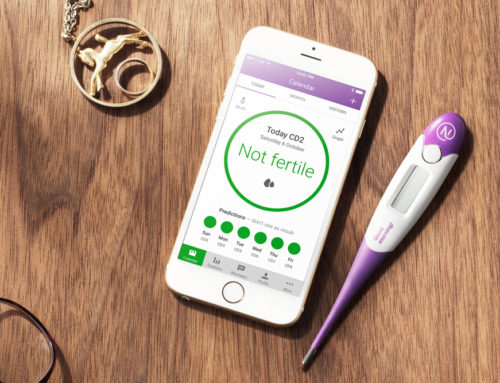
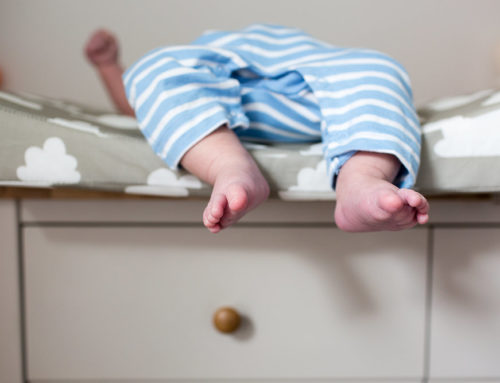
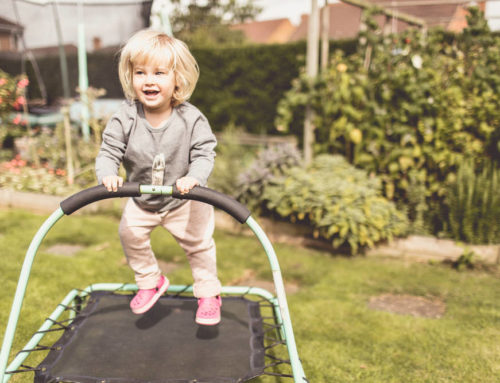
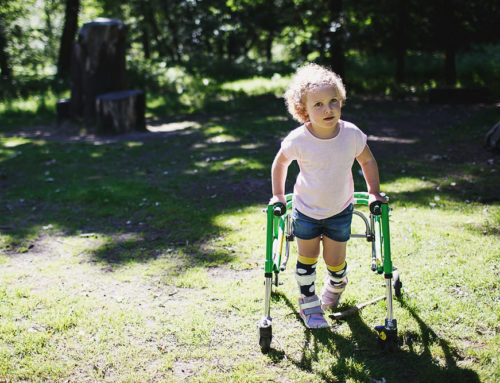
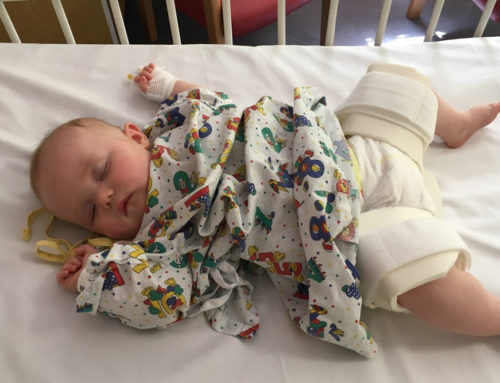
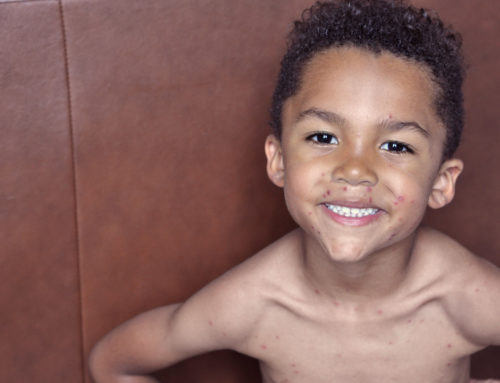
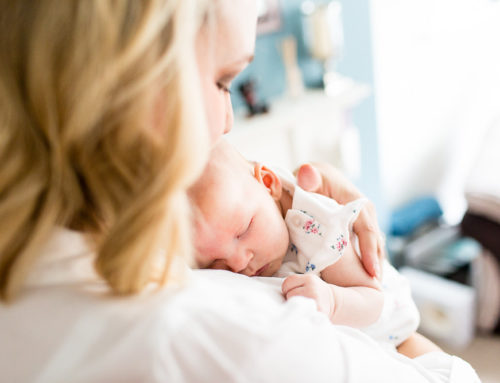

This is a great post – thank you Hannah & RMF. I completely identify with the logic/rational thought going out the window as soon as they are ill!
Hi Katie, I’m so glad you thought it was useful. The irrational panic gets us all, I don’t know why I thought I might be immune to it before I had Oscar! I find it’s especially hard if there isn’t another adult around to bounce your thoughts off when your child is ill.
Morning Hannah. Thank you so much for sharing your expertise with our lovely RMF readers. This sort of information is invaluable. I am currently having first hand experience of the whole temperature thing as Molly has had a temperature for two weeks and last night it hit 40 (again!). We have been to the docs but apparently it’s just a virus so we are trying to ride it out but it is so hard when they are so poorly. xxx
Get well soon Molly! Poor little one x
Hi Lottie, oh poor you and Molly – I hope she gets better very soon. I hope this has been helpful, although when their temperature gets that high it’s completely reasonable do get them checked out at the doctors, that’s what we’re there for!
Thanks Hannah. She’s now on antibiotics as as well as the virus she’s developed a nasty ear infection. Perhaps I should listen when tells me her ear hurts in the future! All good fun. On the plus side she’s very excited to have no school or swimming lessons for a few days!! x
I second that Katie, a great post! Thank you so much ?
Thank you so much Sarah!
This is really useful! Thank you Hannah and RMF.
Going to share this with all my fellow mums too x
Thank you Katie, I really appreciate that! I’m so glad you thought it was useful.
This is SUCH a useful post. I have a 14 month old who seems to have picked up virus after virus since starting nursery and I never know when to be worried or not. Thank you! X
Hi Katie, we went through the same when Oscar started nursery – the viruses seemed never-ending! I’m so glad you found it useful, thank you so much for your comment.
Really informative post. Thank you! I was wondering what is the best way to take a child’s temperature. My son is 10 months old and i have just used a digital thermometer under the arm but have been wondering if it’s worth getting an in ear one?
Hi Sophie, thank you! Great question. I would recommend getting an in-ear thermometer, they are far more accurate. If you’re using an under-arm thermometer they tend to read about one degree lower than their core temperature. Amazon is a good place to buy one.
Thank you Hannah. I’ll check out Amazon x
So helpful! S had a nasty infection at Christmas and her temperature was so high we were terrified!
I’m fascinated by how GPs decide what is viral and has to be fought off by the immune system and what can be helped by antibiotics?
Hi Lucy, it can be so scary when their temperature soars, especially when it’s the first time for you! That’s a great question. Often, the diagnosis of a viral illness is made by the absence of certain symptoms – such as a child with a cough and a high temperature, who has no crackles on their lungs when listening to their chest and has a normal breathing rate, is highly likely to have a viral upper respiratory tract infection. Examination of the child is key for the doctor to determine this, but there is sometimes a subjective factor involved, especially when the situation isn’t black and white. In this case it’s really important that you have trust in your doctor. It’s perfectly OK to ask your doctor for their reasoning behind the advice they are giving you! I hope this helps!
Thanks Hannah, always helpful. I have a little one who has been on endless trips to the doctors, our poor GP… Constant stream of colds and viruses, rapid breathing pretty much whenever she is ill and apparently a disposition for rashes and mottled skin means I am always on high alert. So far, nothing major, but I never know when to relax!!! On the plus side she is now very good at taking Calpol?! Although – serious question – is there such a thing as too much Calpol? I’m not talking over the recommended dosage, I mean in terms of regular use. Not that we use it regularly, but I am conscious that when she is ill we are perhaps a little too liberal when she is particularly unsettled and upset. Should we be holding back? I know not to give it purely to bring down the temperature, our A&E visits (see rapid breathing above…!!) have told me all about that, so I use it mainly when she is visibly distressed. But that is still quite often. Any advice would be greatly appreciated!! Thank you x
Hi Annie, gosh that sounds really stressful, poor you! It’s always best to get checked out if you’re really worried, it sounds like you’re absolutely doing the right thing. Paracetamol (Calpol, Boots-own, whatever you prefer!) is completely safe as long as you don’t give more than the recommended dose or give it too frequently. If your child is ill, giving it regularly won’t cause them any harm, even if that means the maximum dose for their age for several days running.
This is great to have advice on, I always worry when my 2 year old has got a bad cold/slight temp that I give it too him too readily, but I always figure that if I had a cold and felt rotten, I would be taking paracetamol, so why shouldn’t I give it to him – especially at bedtime. We are entering that stage this week with a cold, which no doubt will turn into an ear infection – he always gets ear and eye infections from Nursery!
Thank you Hannah – that is useful to know!
Thanks for this Hannah, it’s so helpful. Just one question though – if your child is over 6 months, is there a temperature which if reached means you should take them to the GP? I often wonder, how high is too high? So far I’ve always had her checked out if it’s gone over 40C and hasn’t come down with Calpol, but would love to know if this is an overreaction. Thanks! x
Hi Tracy, thank you, I’m so glad you found it useful. There isn’t any solid evidence to show that you should be worried at a certain temperature threshold – it can be different for different children, and some viral illnesses typically can cause the highest temperatures. If the temperature isn’t going down 30mins to an hour after giving Calpol, that’s more of a reason to get her checked out – but if you’re worried, take her down to the GP! I always feel more than happy to check out poorly babes, I would much prefer that than mums staying at home, worrying and not wanting to ‘waste the doctor’s time’. That’s what we’re there for 🙂
Having just had two visits in a week to our local sick children’s hospital, the first at 4am with croup and the second with 39.9 temperature and dehydration signs, this is really really helpful! I’ll be sharing with all my mummy friends. It’s so hard to know if you’re overreacting or not and a during the night panic is never good.
Hi Linsey, I completely agree with you, I’m always even more irrational at night! I hope your household is fully recovered very soon and thank you so much for your comment, I really appreciate it.
Day 4 of high temps in our household so this is timely and a good reference point. Thank you, will be saving the info.
Hi Steph, thank you for your comment, I hope you all get better very soon!
This is such a useful post and something I wish I was more aware of with my little girl when she was a baby.
We experienced a very scary febrile convulsion with my daughter at 10 months resulting in a blue light trip to a&e. As scary as the situation was it was quickly explained to me it’s a way the body ‘shuts down and reboots’. My daughter was diagnosed with a UTI which other than the temp I couldn’t state any other symptoms.
She’s since had 2 further UTI’s and high temperatures but whilst they have hit high levels thankfully we’ve not had any more experiences of convulsions.
I highly recommend the in ear thermometers it’s been a god send in our house.
It’s also worth me sharing, when my daughter gets a particularly high temperature she look and feels quite cold to touch and the first thought is to warm her up. This was the mistake I made when she was 10 months I tried to put her in a blanket and that hightened her temperature. I now know to limit the layers.
How scary, glad she’s ok now.
Very useful and also reassuring that the few times we’ve been to our GP with temps / rashes he’s said the same as your handy chart!
I always worry, particularly when it gets to 40 but I agree that mummy/daddy’s instincts are pretty powerful.
Here’s hoping the sunshine is here to stay and colds & viruses are not!
I’d be interested in a post about antibiotics, although I am pretty clued up on when they should be given or not I think there are lots of people who assume that they are the wonder drug for bugs. There’s a lot of scary stories in the media about things like sepsis becoming harder to treat because of overuse of antibiotics for things that don’t need them. I always try to avoid having them (although in the next couple of weeks I’ll have to as gbs positive with this pregnancy & I always feel uncomfortable having to take them ) Your thoughts on that topic would be fascinating. Sorry for the off topic ramble!
I had a really bad experience with A&E, where we rushed one of my twins in with a 42 degree temp, and vomiting (macaroni cheese, I will never forget it in my hair for as long as I live), only to be told by the nurse that we shouldn’t bring them in for ‘just temperatures’ and that we were wasting their time.
Also, every time (out of 4), I’ve phoned 111, they’ve told me to go to A&E, mostly to be told I didn’t need to be there…
It’s so frightening as a first time mum.
Great post! Very reassuring to read that we are doing the right thing and that clear thinking goes to pot at these times.
Any advice on the best thermometer for 1yr olds. Im using the brother max 3 in1 and it varies wildly between ear and forehead and i dont know which reading to take (i go for the highest)
Any advice on getting their appetites back too would be greatly appreciated.
Lyndsey x